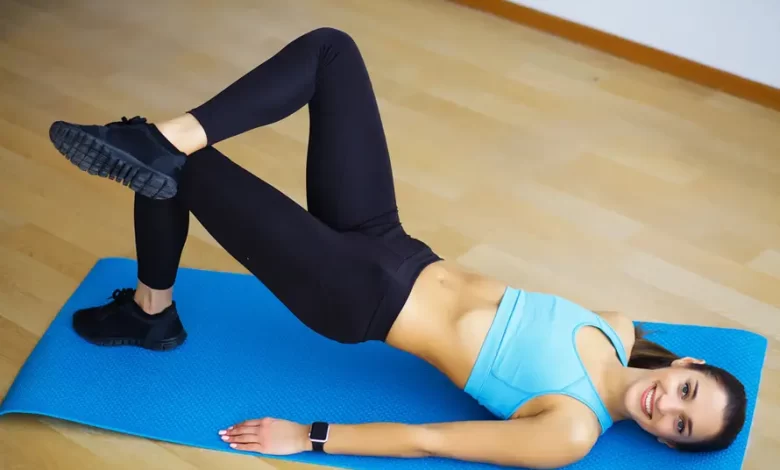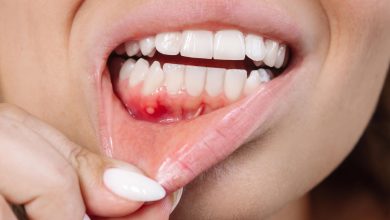Stronger Hips in Just Minutes a Day: The Proven Exercise Plan

Your hips do more than you might think. They power your walks, stabilize your balance, help you sit and stand, and protect your lower back from strain. Yet, many people ignore hip strength—until they start feeling aches, stiffness, or weakness.
The good news? You don’t need hours in the gym or fancy equipment to build stronger hips. With just a few minutes a day, you can strengthen and mobilize your hip muscles, improve posture, reduce pain, and boost your athletic performance.
Why hip strength matters, the proven exercises that deliver results, and a daily plan you can follow to see real improvement—fast.
Why Strong Hips Matter More Than You Think
When you hear “strong hips,” you might imagine athletes sprinting or dancers leaping. But hip strength is just as crucial for everyday life as it is for sports.
1. Core of Your Lower Body
Your hips connect your upper and lower body, acting as a powerhouse for nearly every movement you make. Walking, bending, climbing stairs, lifting—your hips play a central role.
2. Protection Against Injuries
Weak hips cause instability, making your knees, lower back, and ankles take on extra strain. This can lead to common issues like IT band syndrome, hip bursitis, or even chronic back pain.
3. Better Balance and Posture
Strong hips keep your pelvis aligned, helping you stand taller and move with more control. This is especially important as we age, since hip weakness contributes to falls.
4. Enhanced Athletic Performance
Whether you run, cycle, swim, or lift weights, strong hips boost your power, speed, and endurance.
Understanding Your Hip Muscles
Before jumping into the exercise plan, let’s understand what we’re working on. The hip area isn’t just one muscle—it’s a group of muscles working together.
1. Gluteus Maximus
The largest muscle in your body, responsible for hip extension and power.
2. Gluteus Medius & Minimus
Key stabilizers that control side-to-side movement and hip rotation.
3. Hip Flexors
Located in the front of your hips, they lift your legs and assist in walking, running, and climbing stairs.
4. Adductors
Inner thigh muscles that pull your legs together and stabilize the hips.
5. External Rotators
Small muscles like the piriformis that help rotate your hips outward.
A well-rounded hip workout targets all these muscle groups to ensure balance, mobility, and strength.
The Science Behind a Few Minutes a Day
You might wonder—can just a few minutes a day really make a difference? Yes, and here’s why:
- Consistency beats duration: Short, daily workouts accumulate faster results than occasional long workouts.
- Activation-focused training: Many people sit for hours, leaving hip muscles “asleep.” Quick, targeted exercises reawaken them.
- Progressive overload in micro-doses: Small, consistent increases in reps, time, or resistance lead to significant strength gains over time.
The Proven Daily Hip-Strengthening Plan
This 7-exercise routine takes about 8–12 minutes per day. No equipment is needed—just a mat and optional resistance bands.
Warm-Up (1–2 minutes)
Before strengthening, warm up to improve blood flow and flexibility:
- Hip Circles – Stand and make big circles with each leg (10 each direction).
- Bodyweight Squats – 10 slow reps to activate the glutes and thighs.
1. Glute Bridge (Hip Extensor Strength)
Muscles worked: Gluteus maximus, hamstrings, core.
How to do it:
- Lie on your back, knees bent, feet hip-width apart.
- Press through your heels and lift your hips until your body forms a straight line from shoulders to knees.
- Squeeze your glutes at the top for 2 seconds, then lower slowly.
Reps: 12–15
Tip: Place a band above your knees to increase activation.
2. Clamshells (Hip Abductor Strength)
Muscles worked: Gluteus medius, external rotators.
How to do it:
- Lie on your side, knees bent, feet together.
- Keeping feet touching, lift your top knee as high as possible without rotating your hips.
- Lower slowly.
Reps: 12–15 per side
Tip: Add a mini-band above your knees for extra resistance.
3. Side-Lying Leg Lifts
Muscles worked: Hip abductors, glutes, core stabilizers.
How to do it:
- Lie on your side, bottom leg bent, top leg straight.
- Lift the top leg to about 45°, then lower with control.
Reps: 12–15 per side
Tip: Keep toes pointing forward, not upward, to target the right muscles.
4. Standing Hip Abduction
Muscles worked: Gluteus medius, hip stabilizers.
How to do it:
- Stand tall, holding onto a chair or wall.
- Lift one leg out to the side without leaning.
- Lower with control.
Reps: 10–12 per side
Tip: Use ankle weights or a band for more challenge.
5. Hip Flexor March
Muscles worked: Hip flexors, core.
How to do it:
- Stand tall with feet hip-width apart.
- Lift one knee to hip height, lower, and repeat with the other leg.
- Move slowly and keep your core engaged.
Reps: 10–12 per side
Tip: Add a slow pause at the top for better activation.
6. Reverse Lunge to Knee Drive
Muscles worked: Glutes, quads, hamstrings, hip flexors.
How to do it:
- Step one foot back into a lunge position.
- Push off your front heel and bring your back knee up toward your chest.
- Return to starting position.
Reps: 8–10 per side
Tip: Focus on balance and control instead of speed.
7. Fire Hydrants
Muscles worked: Gluteus medius, external rotators.
How to do it:
- Start on all fours.
- Lift one knee out to the side while keeping it bent at 90°.
- Lower back down without touching the floor.
Reps: 12–15 per side
Tip: Add a resistance band for a bigger challenge.
Weekly Progression Plan
Here’s how to gradually make your hips stronger over 4 weeks:
| Week | Sets | Reps | Notes |
| 1 | 1 | 12–15 | Focus on form and activation |
| 2 | 2 | 12–15 | Add resistance bands |
| 3 | 2–3 | 15–18 | Add pauses or slower lowering phase |
| 4 | 3 | 15–20 | Use heavier bands or ankle weights |
Stretching for Hip Flexibility
Strength without flexibility can cause stiffness. After each workout, spend 2–3 minutes stretching:
- Figure Four Stretch – Opens hips and stretches glutes.
- Lunge Hip Flexor Stretch – Lengthens tight front-hip muscles.
- Seated Butterfly Stretch – Stretches inner thighs and adductors.
Hold each stretch for 20–30 seconds.
Lifestyle Tips for Stronger Hips
Building hip strength isn’t just about exercise—you can integrate small changes into your day:
- Stand up every 30–60 minutes to avoid hip stiffness from prolonged sitting.
- Take the stairs instead of the elevator for natural hip strengthening.
- Walk uphill or on uneven terrain to challenge hip stabilizers.
- Engage your glutes consciously while walking.
Common Mistakes to Avoid
- Using momentum instead of muscle – Move slowly and with control.
- Neglecting both sides equally – Train both hips to avoid imbalances.
- Skipping warm-up or stretching – This increases risk of injury.
- Progressing too quickly – Add resistance gradually to avoid strain.
When to Seek Professional Advice
If you have persistent hip pain, mobility limitations, or a history of injury, consult a physical therapist or sports medicine specialist before starting a new exercise plan. They can tailor exercises to your needs and ensure proper form.
The 5-Minute Quick Hip Power Plan (For Busy Days)
When time is tight, here’s a condensed version of the routine:
- Glute Bridges – 12 reps
- Clamshells – 12 reps per side
- Standing Hip Abduction – 10 reps per side
- Fire Hydrants – 12 reps per side
Done in under 5 minutes, but still keeps your hips active and strong.
The Bottom Line
Strong hips are the foundation of pain-free movement, good posture, and athletic performance. You don’t need hours of training—just a few focused minutes a day can transform your hip strength.
By following the proven daily plan above, you’ll:
- Activate and strengthen key hip muscles
- Improve stability and balance
- Reduce the risk of injury
- Enhance mobility and comfort in everyday life
Your hips support you every step of the way—so give them the strength they deserve.




